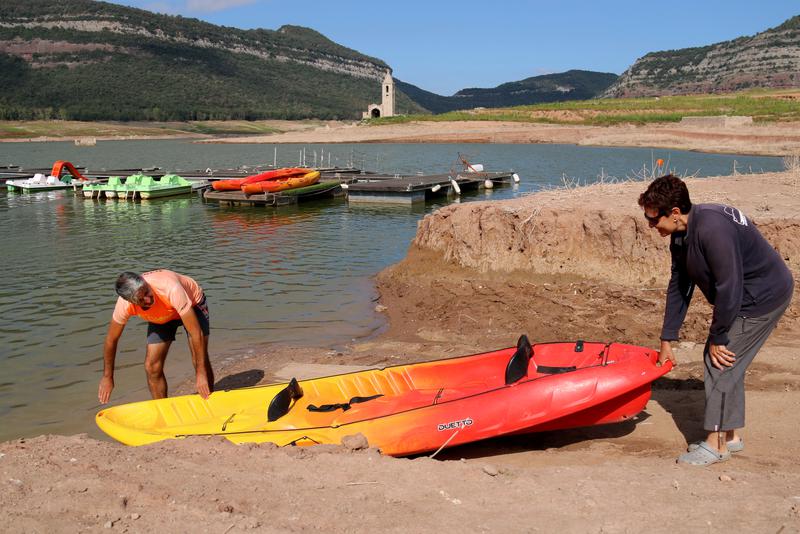'Worst summer' in 20 years for tourism at drought-stricken Sau reservoir
Water sports businesses say they might have to close ahead of time as water levels "drop by the day"

The bell tower of the old, abandoned village of Sant Romà, located in central Catalonia's Sau reservoir, has long served as an indicator of the state of water resources: when water is plentiful, only the tip is visible; during drier periods, far more of it is.
Now, as Catalonia enters the third year of an ongoing drought, not only is the once-submerged church entirely visible, but it can be reached on foot – a phenomenon that has catastrophic consequences for both the environment and the local economy.
"Tourism in the area this year I wouldn't say is nonexistent, but there is not much of it," Marc Álvarez, the owner of Aquaterraclub, a kayak and water paddle rental company, said in a recent interview with the Catalan News Agency (ACN).
More people than usual visited the reservoir during the pandemic as restrictions prevented them from traveling abroad and many residents chose to discover places within Catalonia.
Even more recently, as the sunken church became more and more visible due to the drought, an influx of visitors arrived.
But now, as the novelty of the visible church wears off and as water levels "drop by the day," tourists are becoming more of a rarity, making it the "worst summer" in twenty years for businesses like Aquaterraclub that depend on tourists enjoying water sports in the reservoir.
"Normally there are four water sports companies here at the reservoir, but two haven't opened this year," Álvarez explained.
Because the reservoir is currently at 20% capacity, motorboats are prohibited, as is swimming because of the poor water quality – despite a recent fish cull.
Álvarez worries he will have to close Aquaterraclub ahead of time this summer as water levels continue to drop: "We might not be able to go out on the water in a week or two."